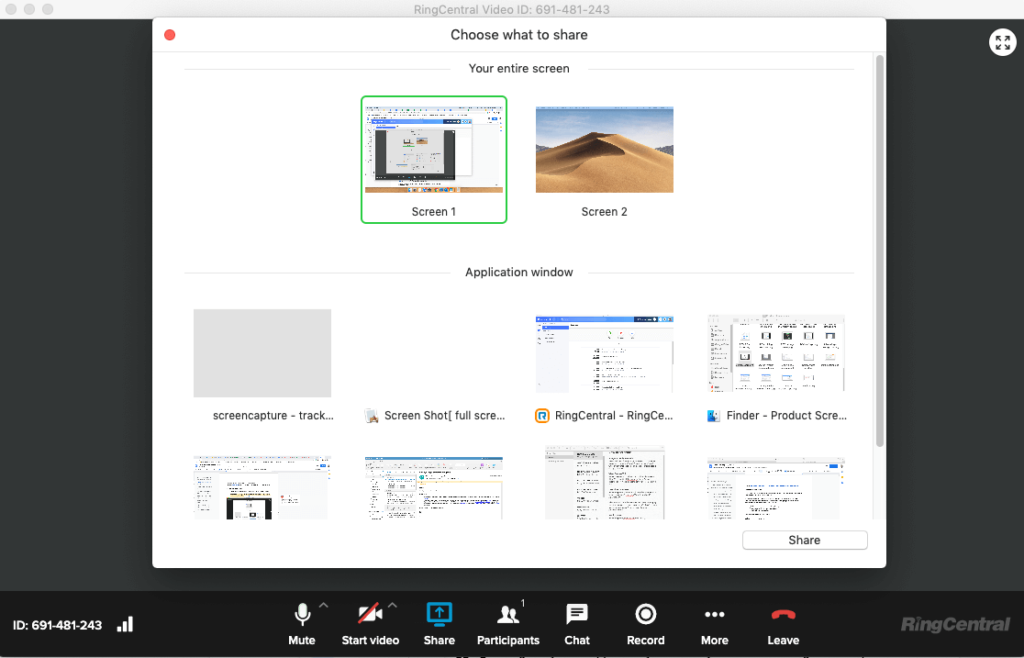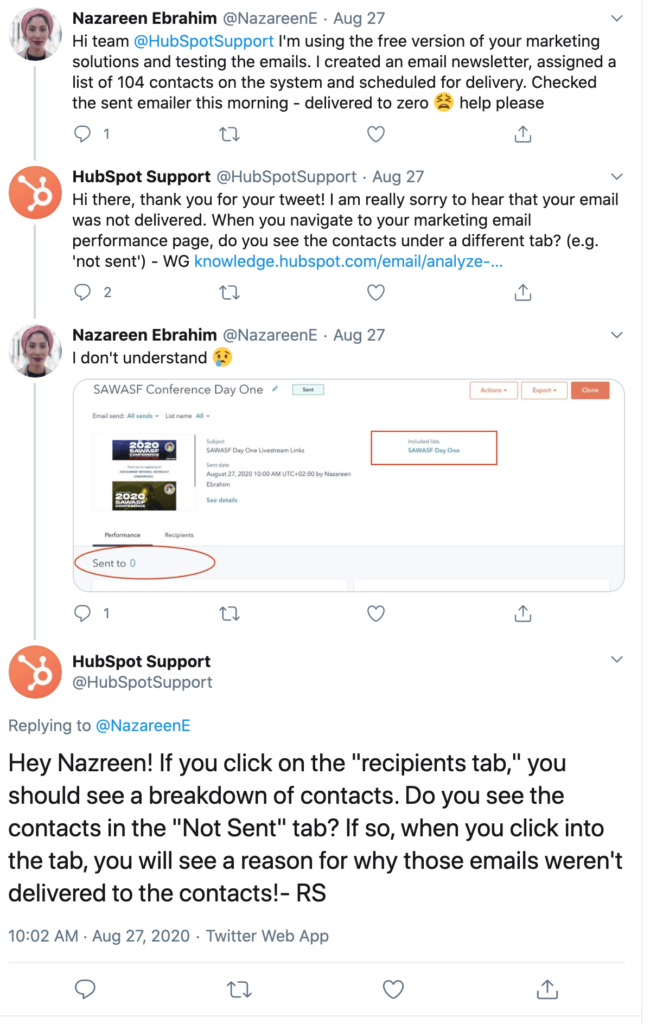When it comes to customer service, SaaS products are in a league of their own. Because customers pay on a recurring basis, often use your product daily, and have to learn new features as the product evolves, having good customer support is cash-burn-rate-friendly—and integral to the success of any SaaS product.
Of course, some of the challenges that come with SaaS customer support represent an opportunity as well—especially with a small team.
After all, in a business where customers use your product regularly over time or are just getting to know your product, customer support offers a chance to build a relationship and even glean insights that help the entire company. Not to mention they’re literally the life-blood of startups—as a rule, the goal should be to retain as many customers as possible. (And yes, often that means real-time 24/7 support.)
And that relationship building? That’s also the thing that will get you great reviews and referrals, and keep customers subscribed and make you more money month after month.
So, how can you be sure you’re getting customer support right for your SaaS product? It’s not as hard as it seems—with the right strategy and some simple best practices, your customer support can be the kind that turns customers into raving fans.
As a company that helps customer service teams communicate and collaborate every day, we know how important support is to small SaaS businesses like yours. That’s why today we’re sharing the best insights that will help you help your customers.
Here’s what we’ll cover today. Feel free to skip ahead:
- 3 essential components of a SaaS customer support strategy
- The agents
- The tools
- The resources
- 3 SaaS customer support best practices
- Meet customers where they are
- Tailor your messaging
- Reframe your customer service
🔑 What’s the key to building a customer-centric team? Grab our eBook to find out.
3 essential components of a SaaS customer support strategy
When it comes to creating a SaaS support model that works for your company, you need to start with a few foundational components.
Having a good team, the right tools, and solid customer resources will make sure that your support team is set up from the beginning to provide the best possible customer service.
In the next section, we’ll talk more specifically about best practices for your support agents, but first, it’s all about getting the right framework to build your support strategy on.
Ready? Let’s start with how to hire the right agents.
Great agents
Many larger companies work on a tiered system, with levels of agents handling progressively more complex questions that come in. But for a smaller business, you may have a team as small as one person handling customer support.
That’s why hiring the right people is the most important investment you can make in your SaaS support model.
A great SaaS support agent should be, above all else, curious and ready to learn.
Ultimately, the best agents will know your product inside and out—but usually, nobody will know your product that well yet off the bat.
That’s why investigative skills and an ability to learn and solve problems are absolutely crucial in a SaaS support hire—because those skills will ensure that they learn quickly.
Depending on your product’s complexity, technical skills are important too so that they can handle more in-depth tech questions that may come in.
And, of course, they should also be personable and professional, so you know you can trust them with customer-facing communications.
After you’ve found and trained the best agent possible, trust them! Give them freedom to do well and they’ll deliver exceptional customer service.
If it sounds like this person is a unicorn, you aren’t wrong. In fact, good support agents are so crucial to a customer support model that you may consider opening your search to remote agents to find the best talent.
That’s not the only benefit, though—a remote support team will set your digital product up with a competitive advantage over time. As you hire agents in different places, you can offer support around the clock.
Hiring remote support agents might sound intimidating or complicated, but it doesn’t need to be. The right communication tools will allow your team to stay connected to each other and to communicate with customers from anywhere around the world. Which brings us to our next point.
The right tools
As a SaaS company, you probably already know the importance of having the right technology at your disposal, and when it comes to customer support, it’s no different. The right support software empowers your agents to do their best work in real time.
The most important resource for your agents will be the one they use to actually speak to customers—your support software.
Because of the technical nature of a SaaS product, it’s important to be sure that video conferencing and screen sharing are available options on your customer support platform. For example, RingCentral‘s desktop and mobile app both have screen sharing and video calling options—along with team messaging and phone call functionality too:
But as you’re shopping for tools, don’t lose sight of the fact that your goal should be to help customers solve their problems on the first call or contact.
Screen sharing empowers your team to walk advanced (or just hopelessly lost) customers through even the most technical questions easily. Just imagine a highly technical back-and-forth chat session on a phone call and how much time you could save by being able to see someone’s screen:

It’s also crucial that your team can connect with customers and partners—and even sync customer information—across platforms. When a customer tweets a SaaS support question to you, is your support team prepared to tackle the issue and respond?
Gone are the days when your social media manager could just ask a customer to file a ticket. Customers now expect helpful, uniform responses across platforms. Again, RingCentral can help here. RingCentral’s Engage Digital product consolidates all your customer support queries across social media in one convenient place:
Use a platform that pulls all of these requests into one place, so your team can easily manage them, no matter where they came from.
Another win? RingCentral also makes it easy for support agents to connect with the rest of the team. That means they can provide instant feedback to the marketing department about the FAQ page or quickly message a developer when they need an expert’s input.
Learn more about how tech startups are using RingCentral to collaborate more effectively with distributed teams and keep customers happy.
Customer resources
You’ve heard that oft-cited stat: it costs five times as much to earn a new customer as opposed to keeping an existing one.1
If you find that you’re getting a lot of the same questions coming to your support team all the time, it’s a good sign that it would be worthwhile to invest in some resources on your website.
Some customers just prefer to work through issues themselves, and some may have technical questions at a time when support is unavailable.
Either way, you can ease customer headaches and make the job of your small SaaS support team simpler by investing in resources for your customers.
It might be as simple as an FAQ page or as in-depth as a help center on your website, but either way, your customers should be able to help themselves to information before reaching out to support.
If a lot of the simple questions coming in are about pricing or how to make a purchase, you might need to redesign your website to be more intuitive. Pass these questions on to the marketing team.
In order to know which questions come in most frequently, start keeping track. Then, send these FAQs, along with asking frequency, to the marketing department or a designated support team member to start developing helpful customer resources.
Don’t forget to encourage support staff to utilize these articles when helping customers so they get more familiar with the resources at their disposal.
For instance, a rep can reply “Here’s an article that shows exactly how to do that. Let me know if that helps” instead of spelling out the entire process.
Not only does the agent save time, but they also show the customer where they can find answers in the future.
Plus, if the customer still isn’t getting it, that’s great feedback to edit the article or even speak to the product team about making the software more intuitive. Remember, customer support can be a resource for the whole company.
3 SaaS customer support best practices
Now that you’ve built a solid foundation, we wanted to share some of the best practices you’ll need in your agent playbook to ensure exceptional SaaS customer support.
By instilling these habits in your support reps, through the onboarding process, training, and positive reinforcement, you’ll be able to create an effective team that you can trust to take care of your customers.
To help drive home each idea, we’ve even included real life examples of SaaS companies putting these ideas into action—so there’s no excuse not to implement these support best practices in your own business.
Meet customers where they are
As we previously mentioned, customers are no longer just coming to your site, submitting a support ticket, and patiently waiting for their question to be resolved.
Instead, they expect to get customer support where they are—and on demand.
That means it’s not uncommon to field SaaS support requests on Twitter or Facebook, live chat, and standard support tickets. And our research has found that 88% of customers hate having to repeat themselves on multiple different channels.
It can feel like questions coming at you from all angles—which is why it’s crucial to manage it intentionally with omnichannel customer service.
Omnichannel customer service is all about meeting customers where they are and allowing them to get service however they’re most comfortable—be it by phone, chat, your site, or social media.
Real-life example: Stratejm
Stratejm, a cybersecurity-as-a-service company, saw firsthand the way platform flexibility benefits their customers.
“Now my analysts can communicate and collaborate with our customers in whatever way they choose, including voice, chat, text, email, and video,” said President and CEO John Menezes. These communications options, he said, “make Stratejm friendlier for our customers.”
And they even found that many of their customers preferred to speak with agents via video call over audio calls.
Social media management isn’t just the domain of the marketing department—it’s also a critical support channel, and it should be treated as such.
By moving these social media conversations into the realm of the support team, you can ensure the high quality service your customers expect is consistently provided across channels.
Just use a platform that allows you to bring those conversations into your typical support queue. Then, you can respond quickly and tailor those conversations based on the platform your customer prefers to use.
While social media is usually seen as a marketing platform, more and more, it’s also where many customers turn to get help right now. And, if they’re asking questions on social media because your support team is experiencing delays, it just serves to back your team up even more.
The key to managing these multiple inquiries? Know who you’re talking to.
Again, not only does RingCentral keep your agents organized, but it automatically merges social identities. So, when a customer asks a question on multiple platforms, they’re automatically mapped onto a single user identity and grouped into a single ticket.
It even identifies the best platform to respond on, automatically. Talk about simplifying your support queue.
With a tool like that, it’s easier to work through your queue and get questions answered quickly, saving your agents tons of time that would otherwise be spent responding to redundant questions.
Tailor your messaging
When customers interact with brands on Twitter or Facebook, they’re expecting the same content and quality of service that they would experience via email, chat, or phone. Of course, you’ll still need to tailor your messaging a bit.
A quick reply is perfectly acceptable on Twitter, while an email requires a greeting and an opportunity for them to respond with questions.
Most of all, when they are asking a support question, it’s time to step away from the marketing language you might normally use on social media and get their problem solved.
Real-life example: Hubspot

For example, Hubspot offers support on Twitter (responding both to their @Hubspot company page and @HubspotSupport requests) in quick, helpful, casual tweets—perfectly tailored to that platform.
That doesn’t mean they cut any personalization or a nice greeting, but they may not dive as deep as they could over email.
Consider how you can tailor your support language so that it’s consistent, but still appropriate for the platform you’re using.
Not only will it just look better to keep it brief instead of replying with a slew of tweets, but your customer will get a response in a format they’re used to using. After all, if they reached out for support on a given platform, that’s probably the way they’re most comfortable communicating.
Keep in mind that different demographics also have different preferences when it comes to social media.
Slang, emojis, and jokes are more comfortable for the younger audiences on Twitter and Instagram. On Facebook or LinkedIn, though, a more polished response will go over better with the older or more professional demographics you’d find there.
Of course, you should always interact with customers in a human way. After all, they’re humans, and so are you. That means personalizing your response with their name and any details you know about them or their business, when possible.
This is another area where it pays to hire savvy support agents—the right team members can be trusted to take your standard scripts and tailor them to the specific customer and platform they’re working with.
Reframe customer support
Companies that are known for great SaaS customer service don’t leave it in the hands of one team—it’s a company-wide initiative.
Customer service isn’t everyone’s job, but it’s everyone’s responsibility. When a customer has a question, nobody should be above helping them out. After all, without your customers, you wouldn’t have a company.
Real-life example: PipelineDeals
Seattle-based CRM PipelineDeals’ top core value is being customer-obsessed.
To them, that means that anytime a customer calls in, they’re greeted by an employee, not an automated menu of forwarding options—even though they have a remote team.
Because they use RingCentral, their support reps can be available even when they’re working remotely or on the road.
PipelineDeals is such a customer-focused company that every new employee listens to and participates in support goals as a part of onboarding at the company. “It helps us give each employee a better understanding of the needs of the people we serve,” said Paige Thomas, PipelineDeals’ Customer Care Manager.
And it’s paid off, earning the company several awards for their outstanding customer service and a near-perfect rating on review sites.
By instilling a customer-centric mindset across your company, you can ensure that quality SaaS customer support isn’t just a nice idea, but is woven into the fiber of your company. This idea might begin at onboarding, but it shouldn’t end there.
Marketing, sales, and even the product team can all contribute to making customer service a priority. How? Remove silos.
Walk the talk of customer support being everyone’s responsibility by making sure everyone is available on the same communications platform. With RingCentral, agents use the same platform to speak with customers as they do to chat with other departments across the company.
For instance:
- When a customer has a technical question, an agent can quickly ping the development team to get an answer or even hop on a video call with someone who’s a subject matter expert.
- When agents encounter a lot of questions that signal usability issues on the website, they can let marketing know right away.
- And when a lead contacts support with questions that indicate a potential enterprise customer, it’s simple to redirect them to sales.
Ultimately, you can say all day that customer support is a company priority, but choosing a platform that allows seamless communication is a great way to actually implement that ideal across your company.
Creating the best SaaS customer support experience
If you’re trying to create a great customer experience at a SaaS company, there are unique needs to consider.
For instance, most of your customers will interact with support at least once, since they use the product on an ongoing basis.
Plus, great customer service is crucial for subscription-based companies since continually impressing your customers leads to continued subscriptions, referrals, and more money coming in each month.
Great customer support just isn’t optional for SaaS companies.
Luckily, you’ve got some SaaS support best practices to take with you. With the right combination of great agents, tools, and self-service options, you can build the foundation for a great support team.
Combine those steps with training your agents to meet customers where they are, tailor their messaging, and even reframing customer support to a whole company operation, and you’re on your way to success.
1forbes.com/sites/jiawertz/2018/09/12/dont-spend-5-times-more-attracting-new-customers-nurture-the-existing-ones
Originally published Oct 06, 2020, updated Jun 21, 2024






